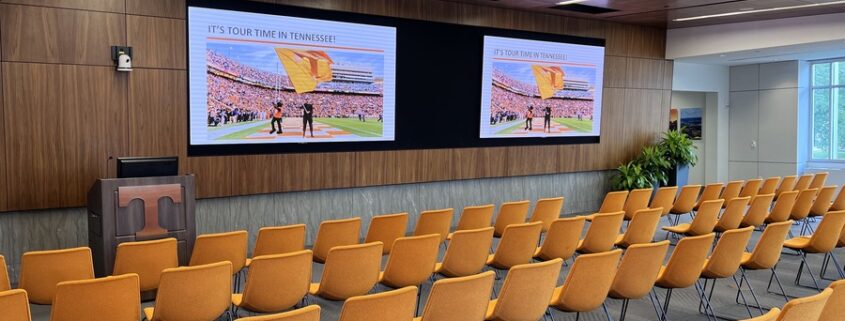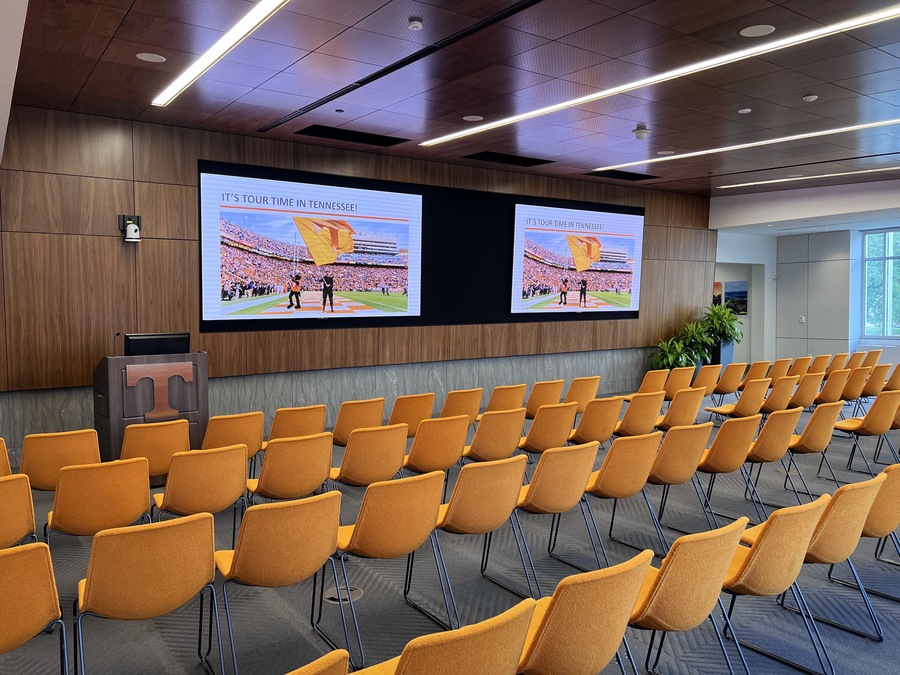How Modern Conference Room Solutions Can Solve Today’s Workplace Issues
Integrate Solutions Designed for Collaboration and Clear Communications
According to a May 2024 Gallup survey, 27% of U.S. employees are working exclusively remotely, while another 53% are among the growing hybrid workforce. Only 21% work exclusively on-site.
While we think these numbers will turn around and office life will regain momentum, the current statistics suggest otherwise. Considering this, it’s apparent that businesses need to up the ante in video conference room solutions and create modern meeting rooms that align with the brand’s aesthetics, promote productivity, and make it easy for teams to connect.
So, what makes up a modern conference room? In today’s AI-smart world, it’s no surprise that intelligent technology plays a significant role, as do tools that enhance collaboration.
Here, we’ll explore the top challenges the hybrid workforce faces and how today’s modern conference room resolves these inherent pain points.
SEE ALSO: Managed IT Services Keep an Eye on the Details
The Hybrid Workforce Challenge
The Gallup survey found many advantages to being part of the hybrid revolution. These include an improved work-life balance, more efficient use of time, less burnout, and higher productivity. The challenges revolved around resources and collaboration.
Resolving the Challenges
The big question is, how can you work remotely and still have access to team members and resources essential to success and collaboration? The following equipment and resources fall into the essential category:
- High-Quality Video Conferencing Cameras
Today’s modern security camera offers crystal-clear visuals, wide-angle views, and AI-enhanced auto-framing and speaker tracking. These features create a sensation of being there for remote attendees.
- Upgraded Audio Systems
Beamforming microphone arrays use algorithms to focus on the speaker. They possess sound-blocking capabilities, eliminating echoes and distortions, a common problem among participants. Now, every word is heard, and remote personnel are no longer fiddling with the sound controls, hoping for better audio quality.
- Designed for Small and Large Groups
As the saying goes, “One size does not fit all.” Large conference rooms are designed for 12 or more employees, not two. Huddle rooms, fitted with similar technology on a smaller scale, can be adopted almost anywhere. These multi-purpose spaces are ideal for conference calls among a few colleagues, interviews, and project discussions.
- Content Sharing Technology
Wireless presentation solutions allow participants to present from any device, including laptops, tablets, and smartphones. They no longer require technical assistance for help with wiring and can start the meeting with one touch. Room controllers manage the entire room, including integrating with video conference systems like Microsoft Teams and Zoom.
Interactive whiteboards enable team members to share almost any file, including images and video, as well as write and annotate.
- The Design
The furniture, artwork, plants, acoustic panels, and lighting play a part in the final design. Modular furniture supports different group sizes and uses. Art pieces with different themes spur creativity.
If your meeting rooms have chairs, a table, and a whiteboard, it may be time for a change. At M3 Technology Group, we perform site surveys to determine your exact needs and how we can integrate legacy systems into new technology. We design, engineer, install, and support your new system, ensuring all aspects work together now and far into the future.
To learn more about conference room solutions or to schedule a complimentary site survey, contact M3 Technology Group today.











